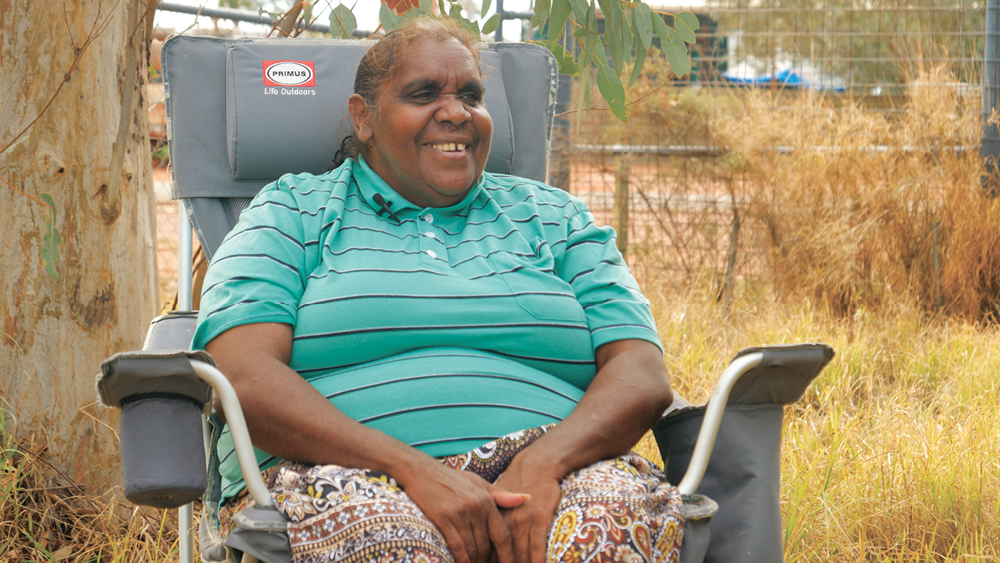Bible translation under the gum trees in Ti Tree
Ambrose first learned about Jesus through his grandmother. She couldn’t read but had a picture Bible from which she used to tell Ambrose the stories from the Old Testament through to Jesus’ time.
“I learned only through watching pictures,” Ambrose says.
Ambrose likes the story of Jesus and the tax collector best. “Jesus is looking for people, like poor people and all of them. Even tax collectors.
“Jesus said to them, ‘You come along with me.’ Jesus made him his follower.”
Ambrose is an Anmatyerr man from Ti Tree in the middle of the Northern Territory, about 200km north of Alice Springs. Travellers driving along the Stuart Highway, the major road running north to south through the heart of Australia, might see Ti Tree as just a roadhouse service station. But more than 1000 people live in the town, the majority Anmatyerr people.
April Campbell is an Anmatyerr woman also living in Ti Tree, working as a school teacher in the local school. She is also a volunteer Bible translator, working with David Strickland from AuSIL Bible translators on a mini-Bible for Anmatyerr people.
“Some of the words in the Bible are not our words.” – April
Bible Society Australia has published Anmatyerr translations of the Gospel of John and a picture book called God’s Story for the Outback, similar to the one Ambrose’s grandmother might have used to tell him stories from the Bible when he was young.
April, who speaks five Indigenous languages as well as English, says Bible translation work can be quite a challenge.
“Some of the words in the Bible are not our words. It’s really hard for us to understand,” she says. April has worked with David for 12 years. Sitting under a gum tree in a camping chair, with yellowing grass coming up to her knees and red dirt under her feet, April says this is a special spot where pastors and volunteers have always sat with David to work on the Bible.
“They enjoy sitting under the tree and helping each other,” she says. “I enjoy the stories in the Bible and translating the words … hanging out with David, having a cup of tea,” she says.
“David will read the story and sometimes the sentences are not good, so I tell him to straighten ’em up … turn all the words around,” she says with a laugh.
April helped to translate the Gospel of John, and says she learned a lot about her faith in the process.
Here is John 3:16 as it appears in the Anmatyerr Gospel of John:
“Altjerr kwenh tjerrtj ahelh-areny mapeh nyerrkek, lakenheng rang lerekw kwerenh nyent renh ahelh-warn lanthek. Kwereng tjerrtj inarl ler kwerenh nakemeng, inang Altjerrel-ayel kwet iteth anetjenh.”
“The community is really happy to have [the words of the Bible] in their own language. It’s really important so people can understand.”
April is always looking for new ways to tell people in Ti Tree about Jesus. She loves to sing and has a particular interest in writing songs in language that tell gospel truths for children. She is also an artist, painting the traditional dot paintings of Central Australia.
“We have a plan when we start writing songs, we gonna do song books with dot paintings, too. So kids can tell stories by doing painting.”
Bible Society Australia is raising support to help our Indigenous brothers and sisters such as Ambrose and April share the Bible their way, in their words – so they can pass it on to future generations through art, storytelling and in their lives every day.



